The Harz is known for its natural beauty, rich flora and fauna and quaint towns that look like they were taken straight out of a fairytale. Popular among Danes and northern Germans, this northernmost low mountain range in Germany remains unknown to most. As a Dane, however, I’d grown up hearing about this region which is often referred to as a “pensioners’ paradise”. Well, I might not be a pensioner or even close to it, but I also wanted to see this mountainous region for myself.
So, during my summer roadtrip through Germany in 2020, I visited the Harz region as one of my last stops.
Located more or less in the middle of Germany, the Harz mountain range stretches 95 kilometres from southeast to northwest and has a width of 35 kilometres, spanning three state borders; Lower Saxony, Saxony-Anhalt and Thuringia. Its highest point is Brocken at 1,141 metres above sea level. Nestled below the mystical mountains are well-preserved half-timbered Medieval towns just waiting to be discovered. I arrived in the early evening and decided to begin my explorations in one of these towns, the romantic Quedlinburg.

The romantic town of Quedlinburg
Quedlinburg’s medieval town centre boasts over 1,300 half-timbered houses – more than anywhere else in the world. It’s no wonder it’s a local favourite! Quedlinburg is often heralded as “the prettiest town in Germany”. I have to agree, although I would place it in first place along with Schiltach in the Black Forest. Thankfully, despite being listed as a UNESCO World Heritage site, Quedlinburg is not yet overrun with tourists, not even when I visited in the high season!
The charming half-timbered townhouses were built in varying styles over 600 years. They are scattered around atmospheric squares, narrow alleyways and winding cobbled streets where colourful flowers hang from windowsills and cute steel bridges. At the main square, the 12th-century Marktkirche St. Benedikti towers above the town hall from 1320 which is covered in green leaves and purple flowers. The 11th-century Stiftskirche St. Servatius sits atop a hill, overlooking it all. I felt like I was walking inside a fairytale. Or that I had magically stepped inside a time machine and ended up in the Middle Ages.
I spent the evening hours just wandering through the pretty streets, clutching my camera as I snapped photo after photo. Every corner I turned gave me a new photo opportunity that I just couldn’t miss. I headed up the Schlossberg (‘castle mountain’) and was rewarded with incredible views of the town and the forested mountains surrounding it. Just wonderful.
Below the Schlossberg, I stumbled upon a very different and interesting part of town, known as Schlossberg-Klippen. Here, half-timbered cottages line cobbled streets like the rest of the town, but with the added element of natural, rocky cliffs. I loved how the town planning was worked around these rocks, preserving the natural beauty of the place. But my favourite part of town was Münzenberg, a neighbourhood atop a sandstone cliff, full of tiny half-timbered cottages. Even though the area is small, I spent a good while there getting intentionally lost between the winding cobbled streets, seeking out views over Quedlinburg and photographing two cats that peeped out at me from a window ledge.



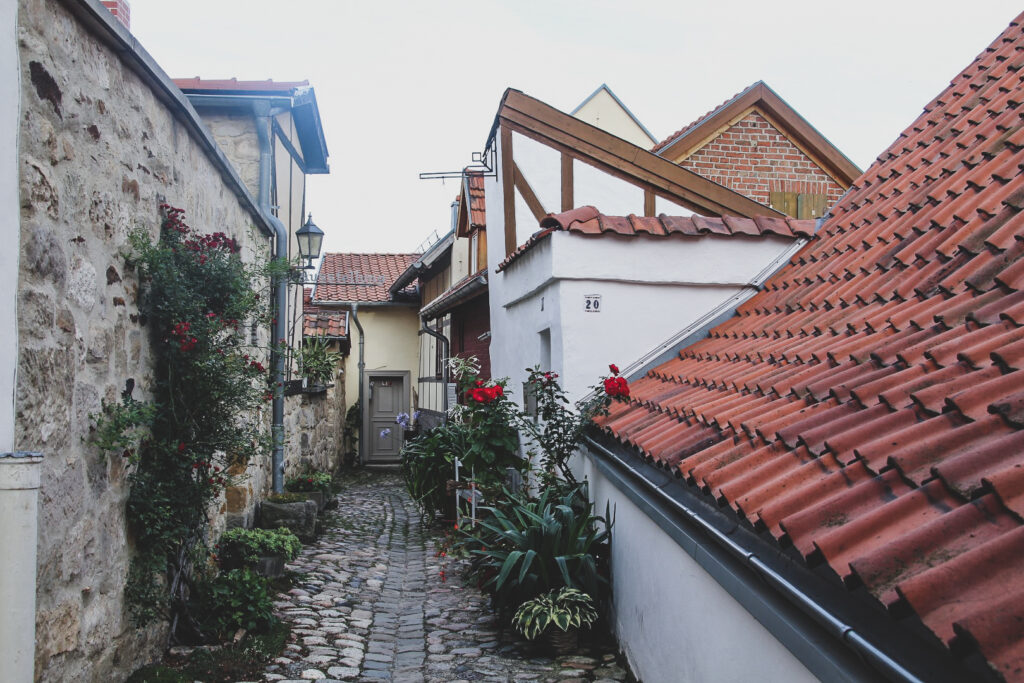


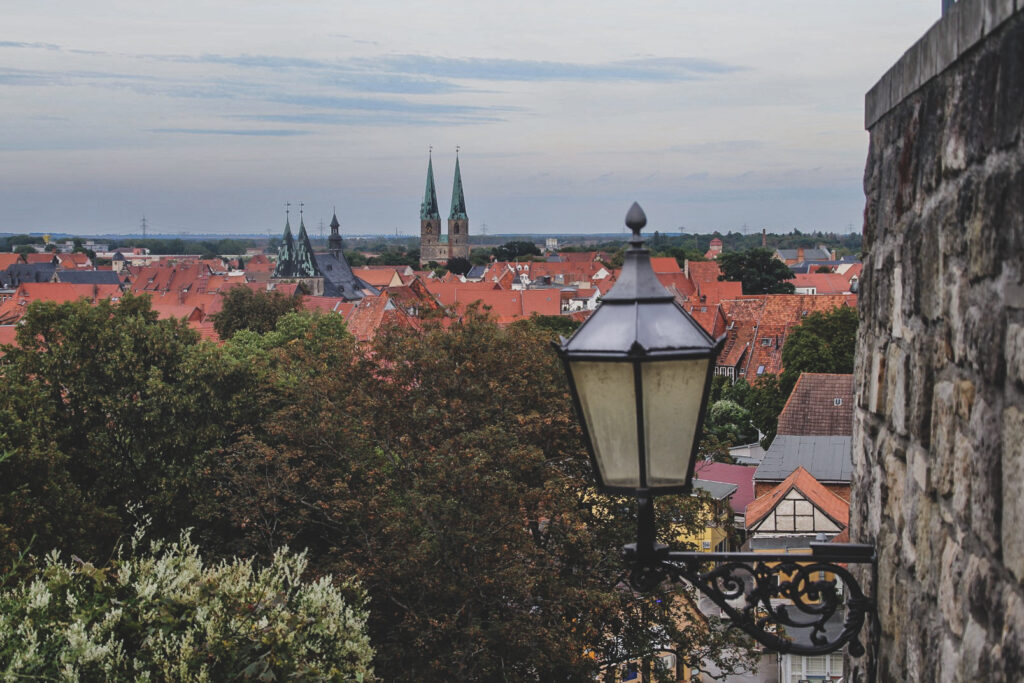










The Rammelsberg Mine
I spent the night in my rental car in the village of Thale on a large free parking lot, and woke up fresh for a new day of exploring in the Harz.
I decided to visit another of the region’s pretty medieval towns; Goslar, which is also listed as a UNESCO World Heritage site. In 968, silver deposits were discovered in the mountains surrounding the town, and in the following centuries, mines were established in the mountains. The most famous mine is the Rammelsberg Mine which is also the largest and oldest mine in the Harz. It was in continuous use for over 1,000 years until 1988!
I drove up to the mine with the intention of visiting it, but I hadn’t done my research and didn’t realize that properly exploring it meant taking a tour. At 16 euros, this isn’t really expensive and it’s probably worth it, but I decided to save it for another good time as I would rather spend more time in Goslar’s centre and going on a hike!

The historical town of Goslar
Founded in the 10th century, Goslar is another example of a well-preserved medieval town full of crooked half-timbered cottages lining an endless array of cobbled streets – although nowhere near as many as Quedlinburg! Goslar, however, is considered the historically most important town in the Harz.
The town is home to the Kaiserhaus (or ‘the Imperial Palace’), which is said to have been a favourite imperial residence for the Salian emperors (1024–1125 AD). There were hardly any tourists which was surprising considering how many – especially Danes – I’d just ran into at Rammelsberg! But it was nice having this corner of Goslar to myself, because that was sure to change as I got closer to the centre.
The main draw of Goslar is the town square, Marktplatz, with the iconic Marktbrunnen well in its very centre. The square is full of architectural beauties such as the elaborately decorated Kaiserworth which was built in the 15th century as a guildhall, and the more modest town hall, also from the 15th century. The square also sets the scene for a very cute event that happens four times per day; all eyes focus on the Kaiserringhaus building as the clock begins to chime, little doors open and figures emerge, telling the story of Goslar’s mining history. This happens every day at 9 AM, 12 PM, 3 PM and 6 PM and is a highlight for anyone visiting Goslar.
Tip to free parking in Goslar: If you arrive by car to Goslar, park at the large Füllekuhle parking lot – it’s completely free and very central!




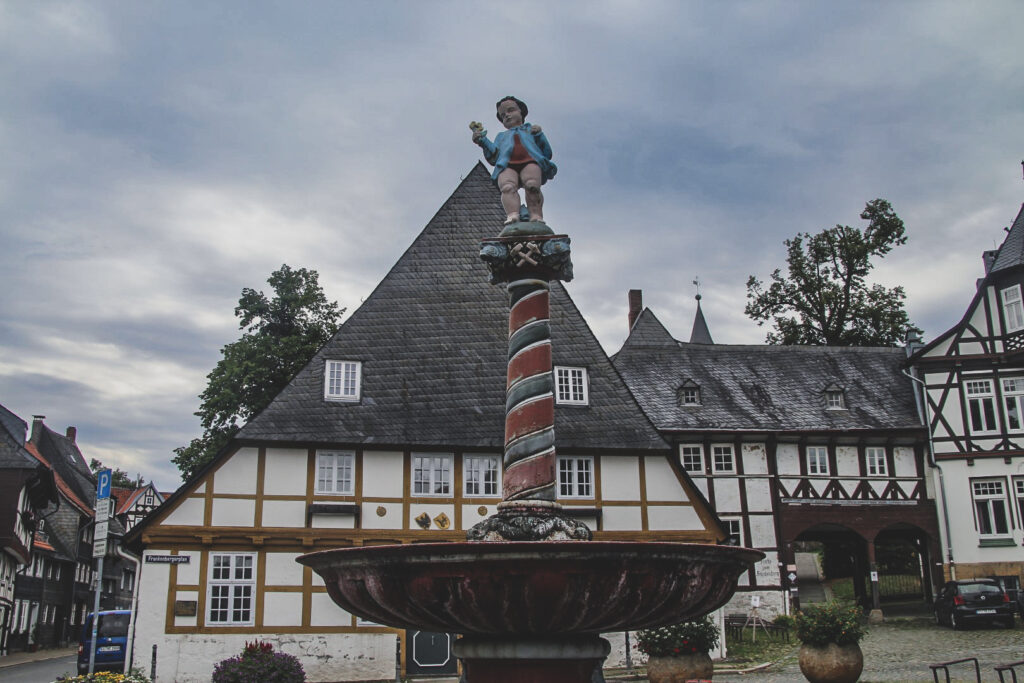




An evening hike in the Harz Mountains
Of course, I couldn’t leave the Harz behind without going for a hike through the dark forested mountains. I drove to the tiny village of Hahnenklee, along a narrow winding road that took me high up into the mountains. Hahnenklee is home to the only stave church in Germany, the Lutheran Gustav Adolf Stave Church, built between 1907 and 1908. The village is also well known for being the starting and ending point of one of the most popular hiking trails in the Harz, the Liebesbankweg (‘the love bench path’).
The trail is a seven-kilometre-long circular route with 25 different love-themed benches along the way. I wasn’t feeling up for a long and strenuous hike, so this one was perfect for me – even though I was the only single person on the trail that day… Not my territory, I guess! Still, I really enjoyed the hike.
I left for the hike just past 5 PM. It was the perfect time to go as the air was a lot cooler than earlier and the popular trail was almost empty apart from a few couples here and there. I love having nature to myself, and it even meant that I could enjoy my dinner on one of the love benches without ruining a couples’ special moment.
The trail followed a mountain biking trail for quite some time, something I would love to try if I ever return to the region. The mountain biking trail was a lot steeper than the hiking trail which only had a few ascents that really weren’t tough at all. For an off-day, it was the perfect way to see some of what the Harz region has to offer.
The sun set while I was on the hike, displaying the most beautiful pink and orange hues on the cloud-dotted sky. It was dark when I returned to the car. The parking lot at the trailhead is free so I decided to stay there for the night. My last night in the car!
Want to hike the Liebesbankweg yourself? Click here to find out more!






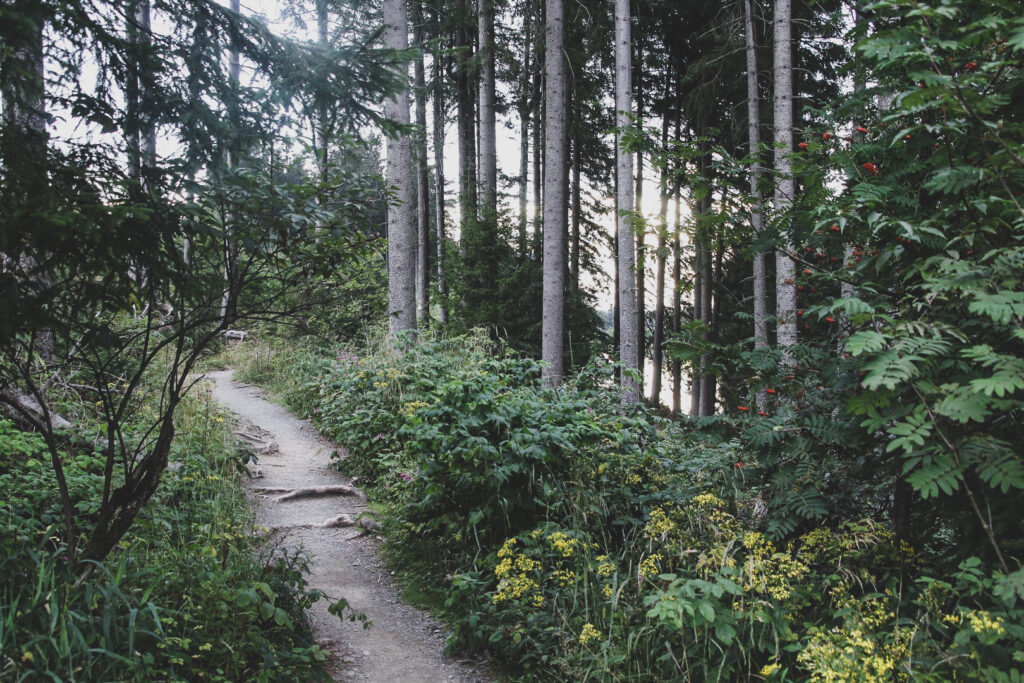


Leaving the Harz behind the following day, my roadtrip in Germany was coming to an end. I had just one destination left; visiting my friend in Biesenthal north of Berlin. I really enjoyed my time in the Harz, and a future return is very probable! Next time, I would love to climb its highest peak, go mountain biking and explore more of its quaint towns!
Leave a Comment
Pingback: To Biesenthal and Magdeburg: the end of a summer roadtrip through Germany – I Live as I Dream on 02/06/2022
Pingback: My May-June 2022: Around Denmark, Germany and a slice of the Czech Republic – Northtrotter on 02/06/2022
Pingback: 10 most beautiful towns and villages in rural Germany – Northtrotter on 02/06/2022
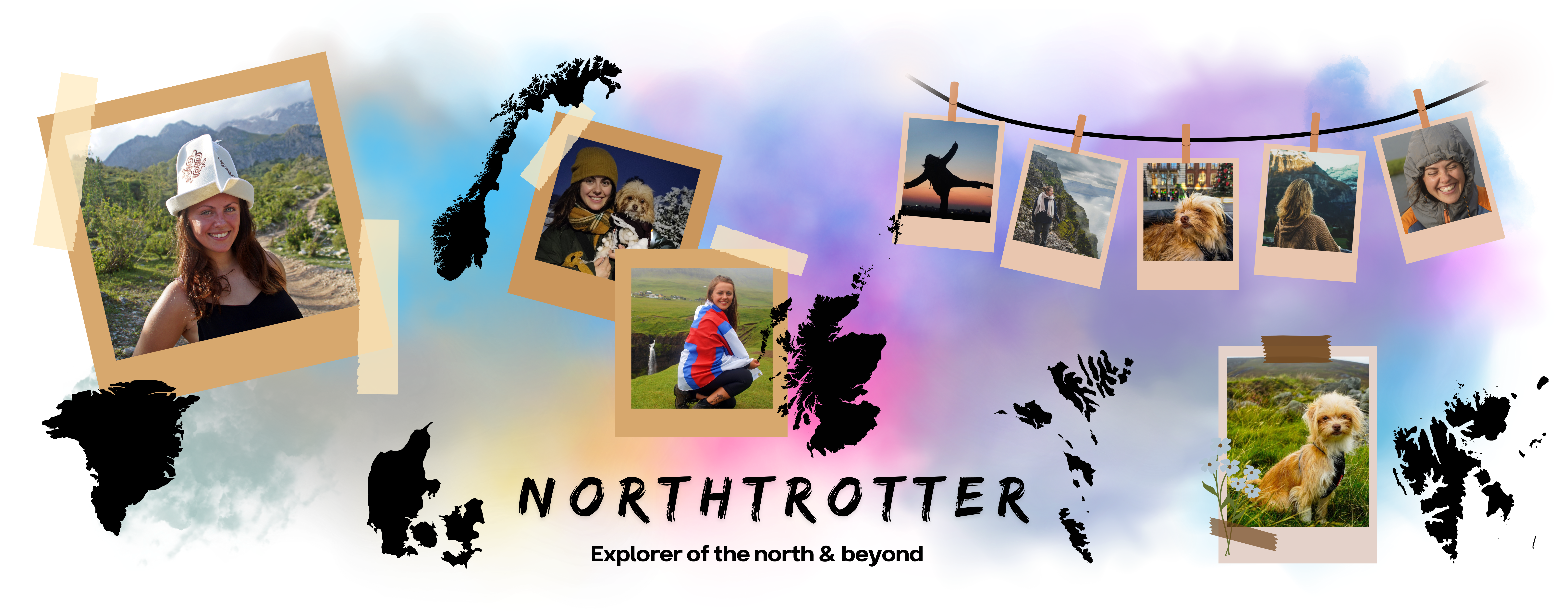


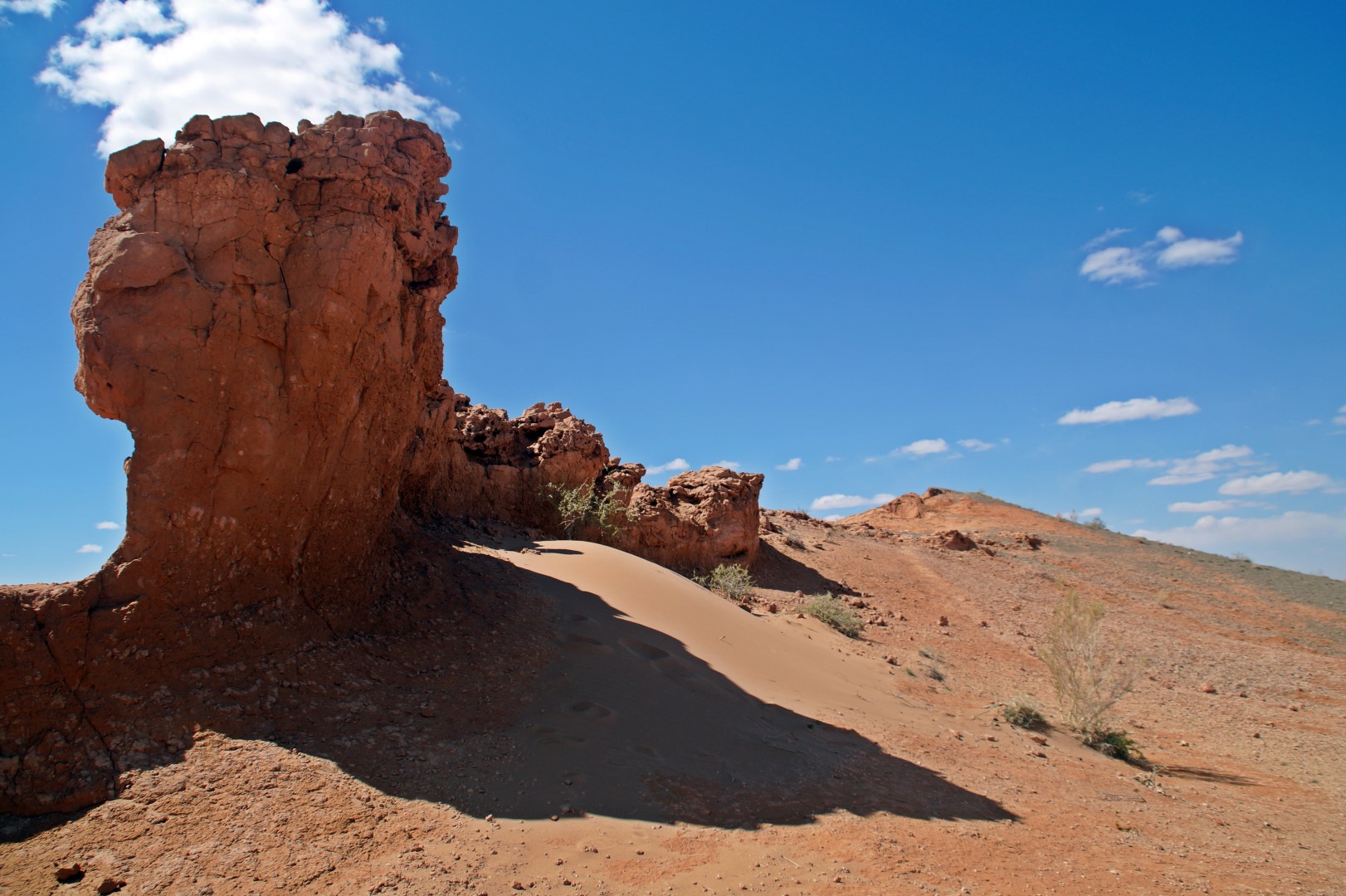

5 COMMENTS
Juliane
3 years agoSo this popped up on my Google feed and I was surprised to see my cat on the picture 😂. These are beautiful pictures of them, glad you enjoyed Quedlinburg.
Melissa Cherry Villumsen
3 years agoWooow what a crazy coincidence!! Well thank you very much for letting me use your cat as a model 😛 feel free to use the photos and let me know if you want them in a higher resolution!! 😀